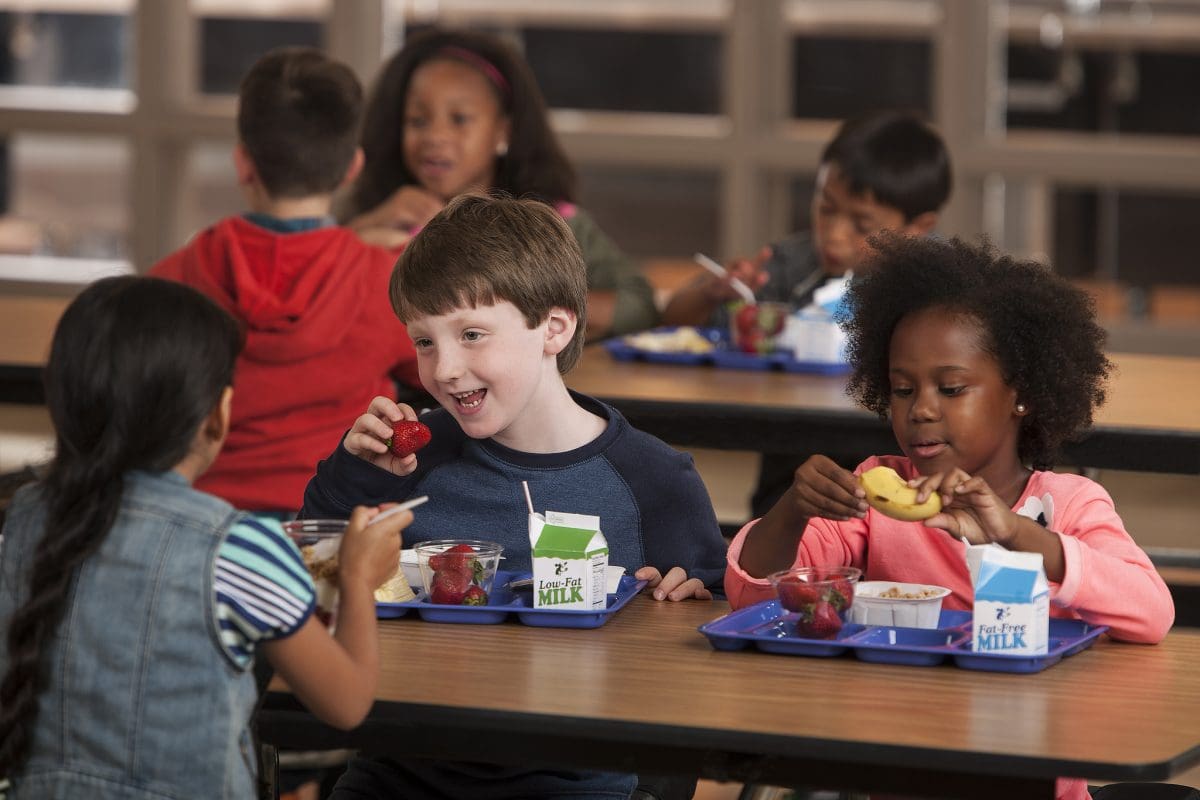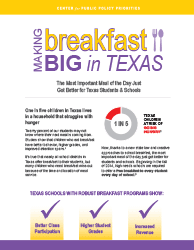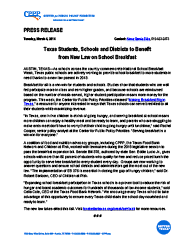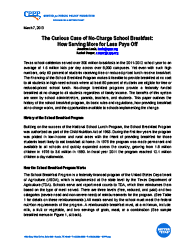School Breakfast Program
Background
The School Breakfast Program (SBP) ensures that children in Texas start their school day with the nutrition they need to learn. In addition to increasing school revenue, studies on school breakfast show that eating breakfast leads to higher attendance, math scores and graduation rates while decreasing tardiness and classroom behavior problems. Eating a healthy breakfast improves the life of children outside the classroom as well: it takes financial pressure off of food-insecure families at risk of going hungry, and it lowers the risk of children experiencing other health problems.
The SBP is available to nearly all children attending school in Texas. While any student may purchase breakfast, program benefits are targeted towards low-income students at high risk for hunger. Depending on household income, families can receive SNAP benefits or pay for breakfast at a reduced rate. Students who attend high-poverty schools can eat a free breakfast at school under the SBP.
In Texas, any school with 10 percent of students eligible for free or reduced price meals must have a School Breakfast Program. Income-eligible students receive breakfast for free or at a reduced price of no more than 30 cents to start the day. Other students can also eat breakfast through the school’s food program, but pay full price for meals.
Using federal funds from the U.S. Department of Agriculture, the Texas Department of Agriculture (TDA) reimburses schools for each breakfast served. “Severe Need” schools, where 40 percent of lunches were served for free or a reduced price, are reimbursed a higher reimbursement per breakfast.
While school districts are responsible for determining if children are income-eligible for SBP and for providing all meals, the state’s role is to approve payments and ensure that meals meet nutritional guidelines so that students start the school day fed and ready to learn.
Prepackaged breakfasts are delivered to students’ homerooms by cafeteria staff or student volunteers. Serving breakfast in the classroom means that children who want to eat breakfast aren’t isolated in the cafeteria before school while other students play and socialize. Eating together in the classroom means no child feels singled out.
Great for schools that prefer to keep food in the cafeteria, breakfast after the bell ensures that a child doesn’t miss their chance to eat breakfast. Students report to the cafeteria after the beginning of the school day or during a mid-morning break to eat together as a class.
Related Resources

Chipping Away at Food Insecurity in Texas
Last week the United States Department of Agriculture released its Household Food Security in the United States in 2015 report. This annual report highlights the disturbingly high rate of Texans



